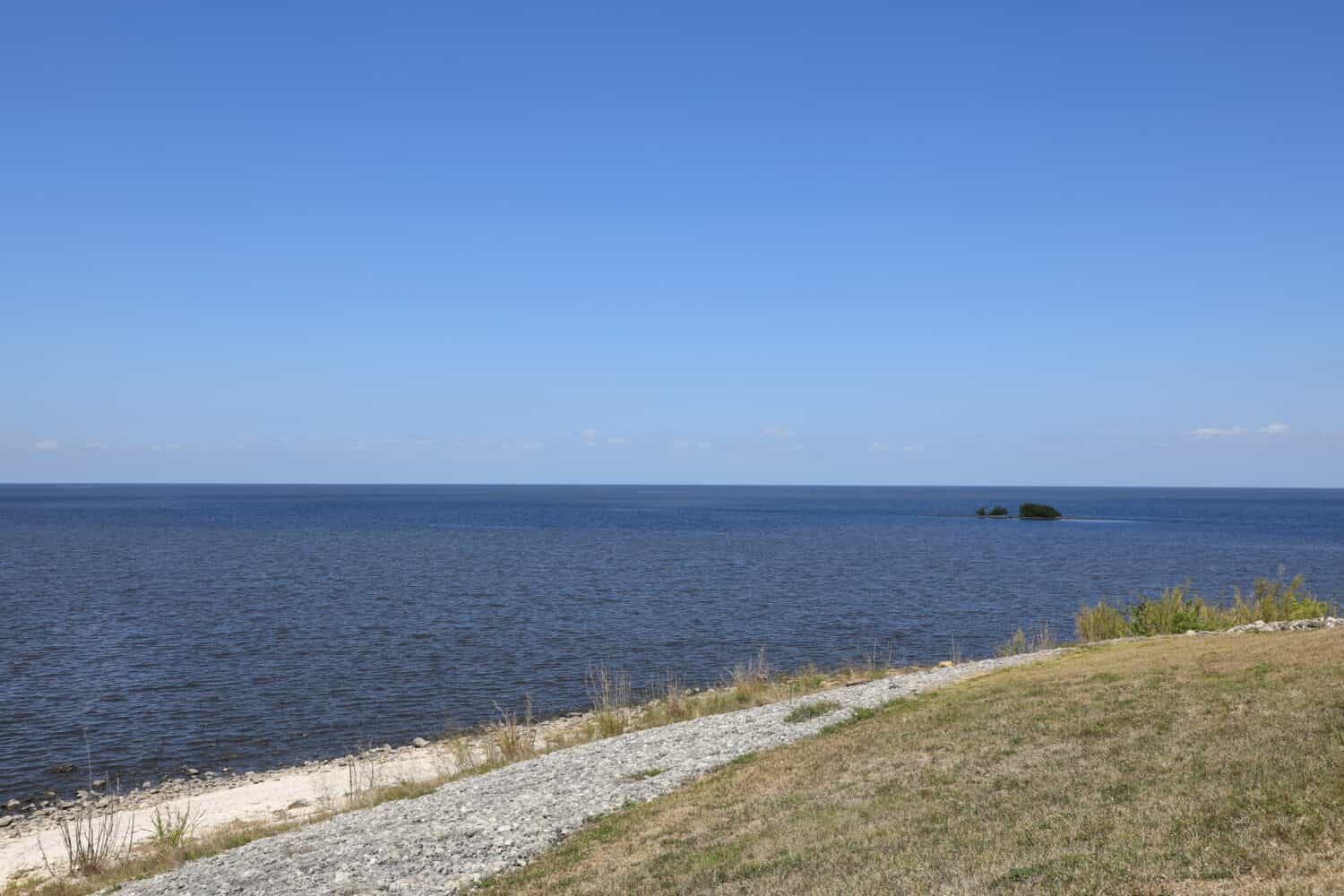Whenever you open up a map and look at the state of Florida, it’s hard to ignore that wide blue dot representing Lake Okeechobee. It’s the most glaringly obvious feature in the entire state, even if you look at the state through satellite imagery.
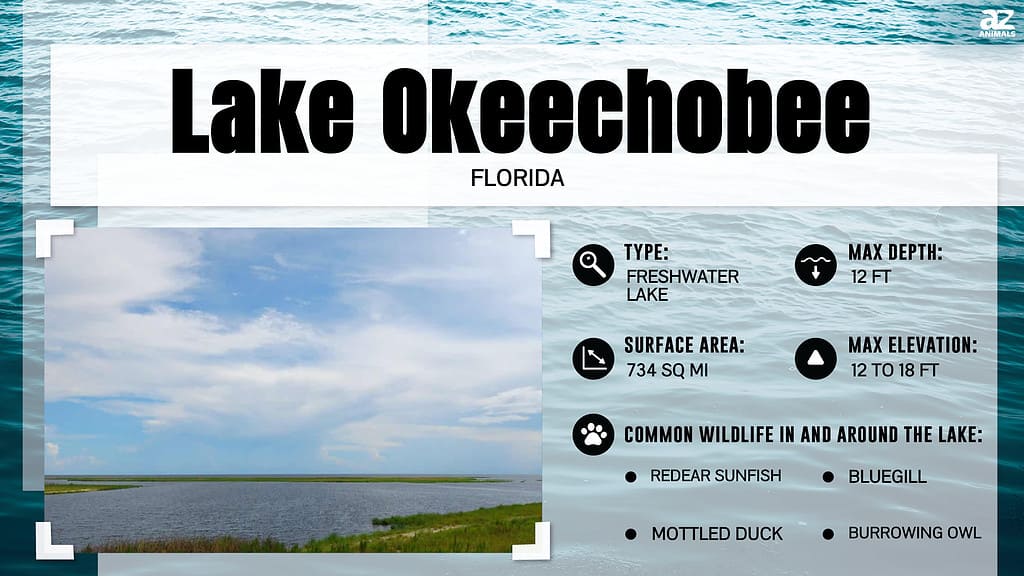
Lake Okeechobee is enormous—the second-largest freshwater lake in the contiguous United States. With a roughly circular shape, Okeechobee is 30 miles (48 km) wide when measuring from its widest points, and covers 730 square miles.
It’s also a huge recreational attraction, mostly for history buffs and as a part of the Everglades. Fan boat rides, surrounding festivals, nature watching, hiking trails, nearby camping, and boat rentals are also huge draws to the area.
Lake Okeechobee Versus Comparable Lakes
Since we’re on the topic of measuring how wide Lake Okeechobee is, we might as well compare it to other massive freshwater lakes throughout the United States. You may be wondering how Lake Okeechobee could be the second largest when we also have the Great Lakes.
Well, that’s where the word “contiguous” comes in. The Great Lakes share a border with Canada, so they aren’t “contiguous” and we’ll leave them off the table for this comparison. For those who live on the Great Lakes, no offense. We know the Great Lakes are massive, with Lake Superior being the largest freshwater lake in the world by surface area.
However, Lake Michigan is contiguous, so we’ll give it some love.
Lake Michigan
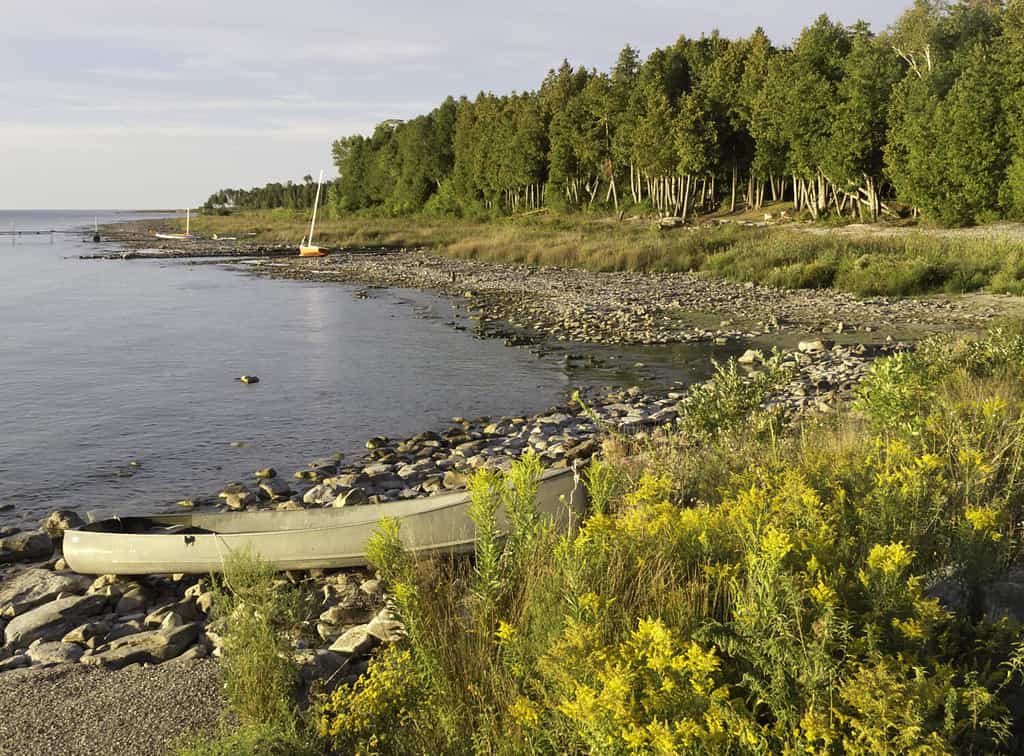
Lake Michigan
©ESB Basic/Shutterstock.com
From its widest points, Lake Michigan is 118 miles wide, over three times the width of Lake Okeechobee. When we said Lake Okeechobee is the second widest in the contiguous United States, we mean that it’s second only to Lake Michigan. This lake is so big that it covers 22,400 miles² of surface area.
Great Salt Lake
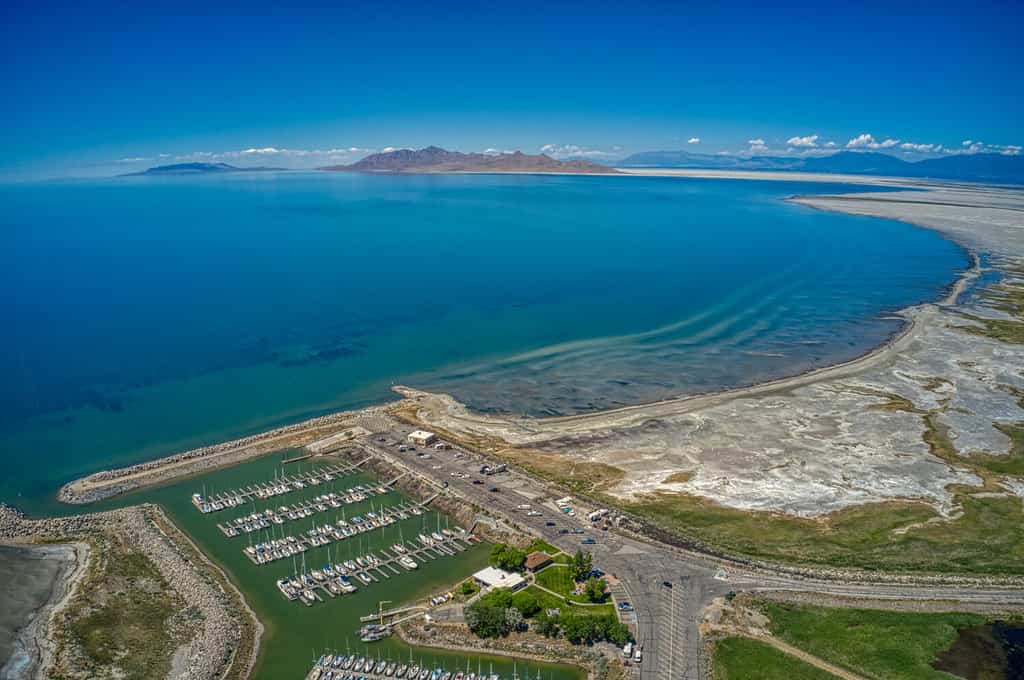
Aerial View of Swimming Beach on the Great Salt Lake, Utah
©Jacob Boomsma/Shutterstock.com
We made sure to include the term “freshwater” as well. If not, Okeechobee falls to third place behind the Great Salt Lake, which is 75 miles wide when the water is at its peak. The thing is, the water levels of the Great Salt Lake fluctuate often and that measurement may decrease in time, only to return later.
Lake Champlain
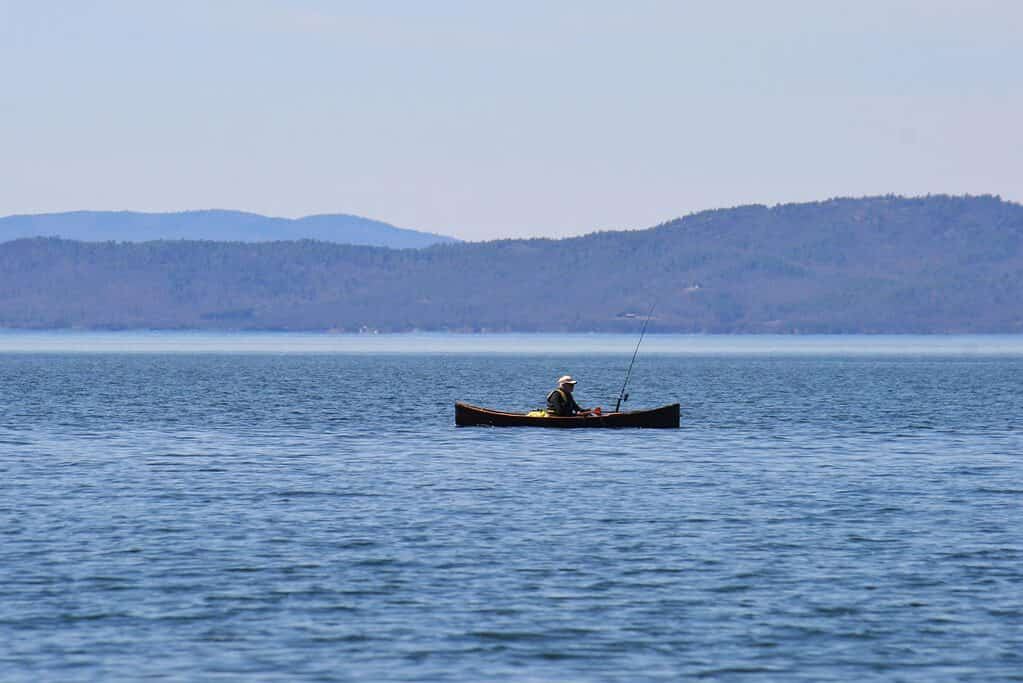
Fishing on Lake Champlain in Vermont.
©Ilir Hasa/Shutterstock.com
Lake Champlain is a very large but very long lake. As such, its width (measuring from its widest points) is only 12 miles. Measuring by length, however, Lake Champlain stretches out for approximately 107 miles.
Largest Freshwater Contiguous Lakes in the US
| Lake Name | Length | Width | Surface Area | Volume | Max Depth |
|---|---|---|---|---|---|
| Lake Michigan | 307 mi | 118 miles | 22,404 mi² | 1,183 mi³ | 923 ft |
| Lake Okeechobee | 35 mi | 30 mi | 734 mi² | 1 mi³ | 12 ft |
| Lake Tahoe | 22 mi | 12 mi | 191 mi² | 36 mi³ | 1,645 ft |
| Flathead Lake | 27.3 mi | 15.5 mi | 197 mi² | 5.6 mi³ | 371 ft |
| Red Lake | 30 mi | 24 mi | 427 mi² | N/A | 37 ft |
| Pyramid Lake | 30 mi | 8.7 mi | 188 mi² | 7 mi³ | 356 ft |
Iliama Lake in Alaska is larger than Lake Okeechobee. The only reason it isn’t on the list is because Alaska is not contiguous with the lower 48 states. If we included it, along with Great Salt Lake, Okeechobee moves to fourth place.
If we include all of the lakes in the United States, without additional conditions, Lake Okeechobee falls to 10th place, behind Lake Oahe and the Great Salt Lake. In terms of volume, Okeechobee is surprising. If you notice in the chart above, the deepest part of the lake is only 12 ft.
While it’s large enough that you can’t see one side while standing on the other, you could walk through a lot of it without your head dipping below the water.
Why is Lake Okeechobee So Shallow?
It’s easy to get caught up in how wide Lake Okeechobee is and forget how shallow it is as well. The average depth is only 8′ 10″ and you can wade through much of the lake. However, since it’s infested with alligators and bull sharks, that’s probably not the best idea.
Lake Okeechobee formed roughly 6,000 years ago. The Atlantic Ocean covered the entire area before receding, leaving behind several shallow ponds, similar to what most people think of when they see the Everglades.
Large volumes of water settled into a lake bed, forming what would later be known as Lake Okeechobee, though it wasn’t as big then as it is today. It was so small at that time that a town grew up along the perimeter. When the Lake Okeechobee Hurricane of 1928 struck, the water level rose an additional 20′, wiping out the nearby town permanently.
Today, much of the surrounding community now rests below the waters of Lake Okeechobee. The hurricane itself took an estimated 2,500 lives.
How Long Would it Take Someone to Swim Across Lake Okeechobee?
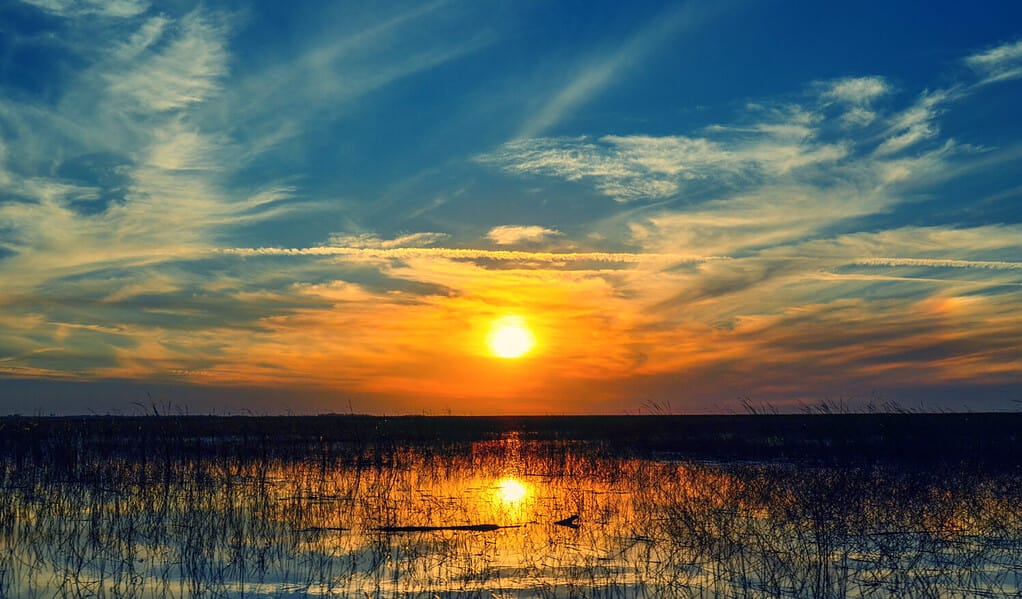
Sunset over the waters of Lake Okeechobee in Florida, USA. With marshy grass growing in the shallow lake.
©JMP_Traveler/Shutterstock.com
The average speed of someone swimming in a body of water is around 2 mph. If that doesn’t sound very fast, that’s because it’s not. Assuming such a swimmer had the endurance, a swim across the widest part of Lake Okeechobee would take 15 hours.
That’s assuming the water is nice and calm, without any chop working against the swimmer, and a constant, neverending, arm-pumping, leg-kicking swim. Not many people could make such a swim, at least not in 15 hours. For someone in good health, it would probably take something more along the line of 18 to 20 hours.
Guinness Book of World Records holder, and the oldest woman to swim across the English Channel (twice), Stella Taylor attempted the feat in 1981. She chose a long route, crossing 40 miles total to complete the swim. Though history records her impressive feat (she was in her upper 40s at the time), there is no indication of how long it took her.
Final Thoughts on the Width Lake Okeechobee
Lake Okeechobee is a strange lake, with a long and sometimes very deadly history. It’s very shallow, filled to the brim with a thriving community of alligators, and even hosts bull sharks from time to time. It’s also full of algae blooms that are harmful to humans.
Its width is an interesting footnote in the Lake’s geological history but pales in comparison to the lives lost as the lake’s perimeter expanded, becoming what it is today.
Thank you for reading! Have some feedback for us? Contact the AZ Animals editorial team.

